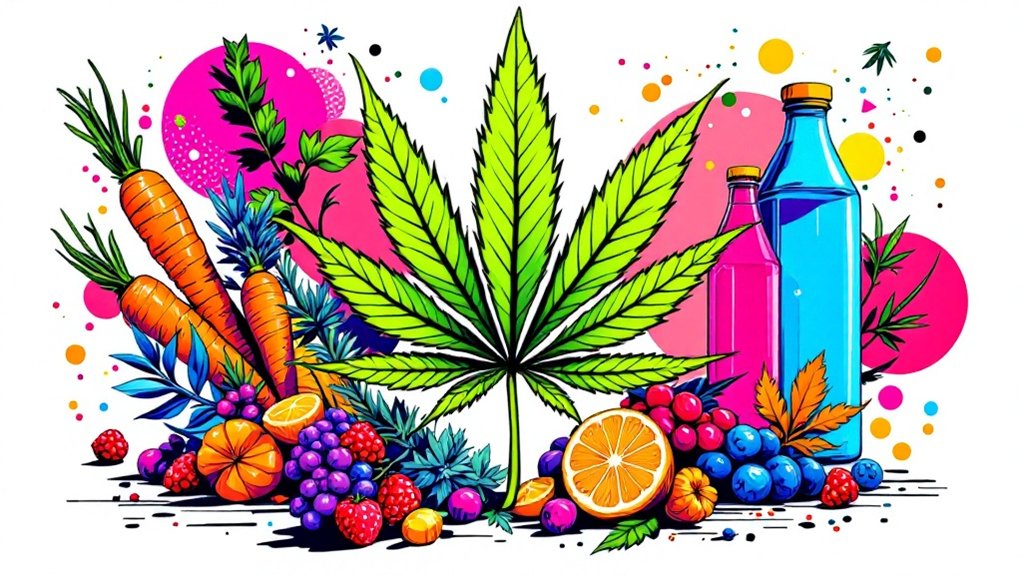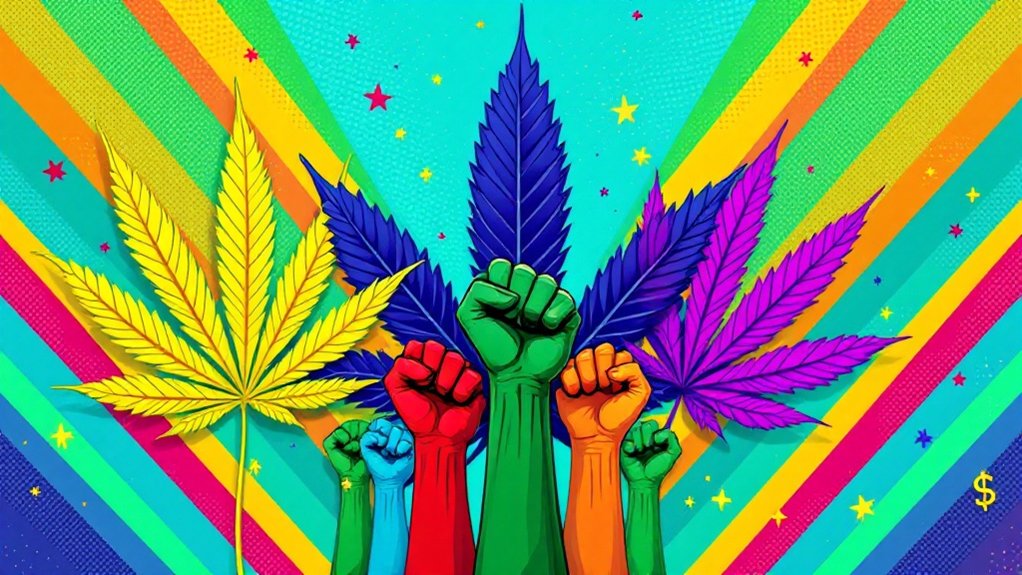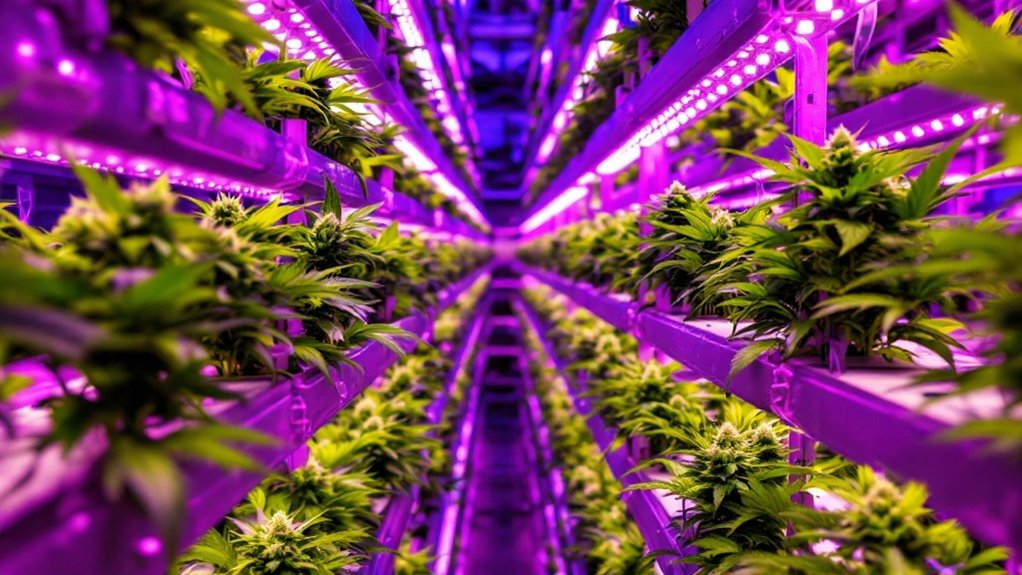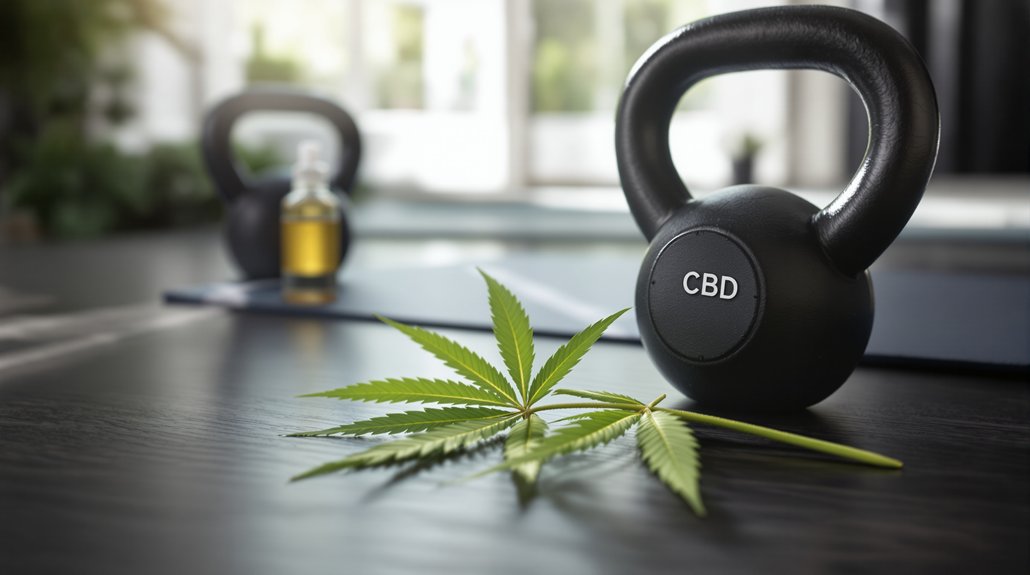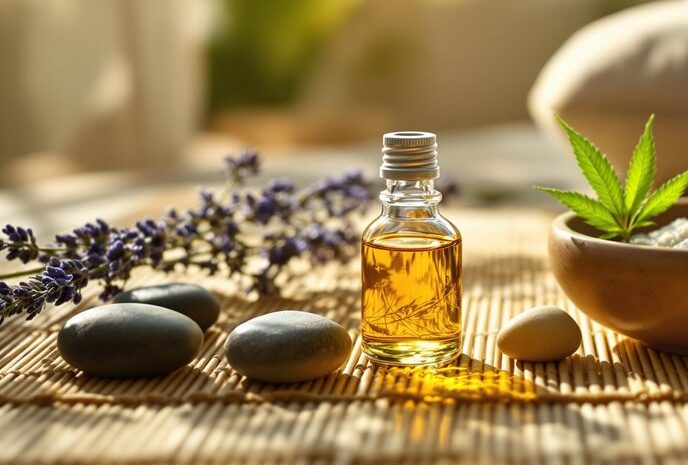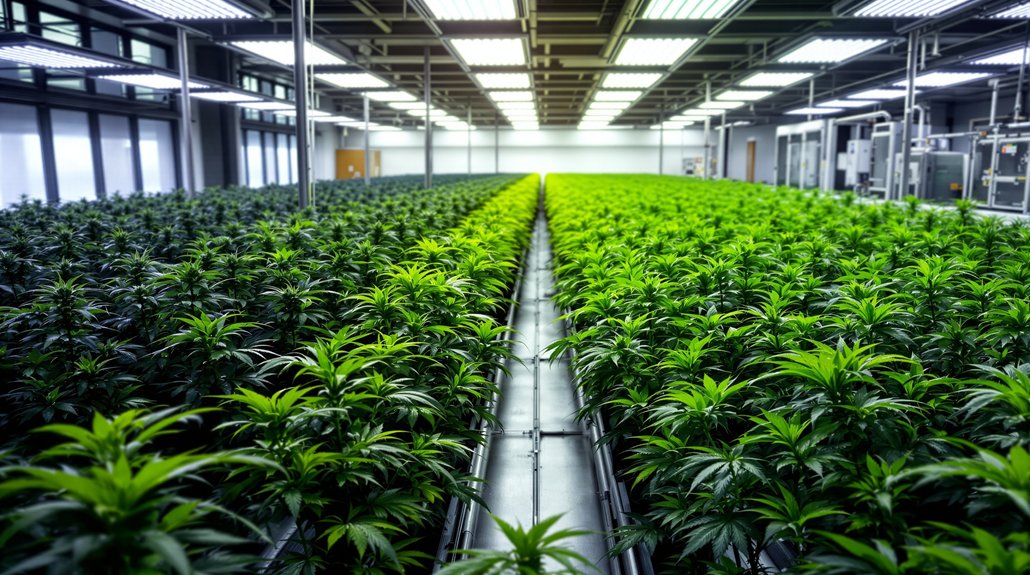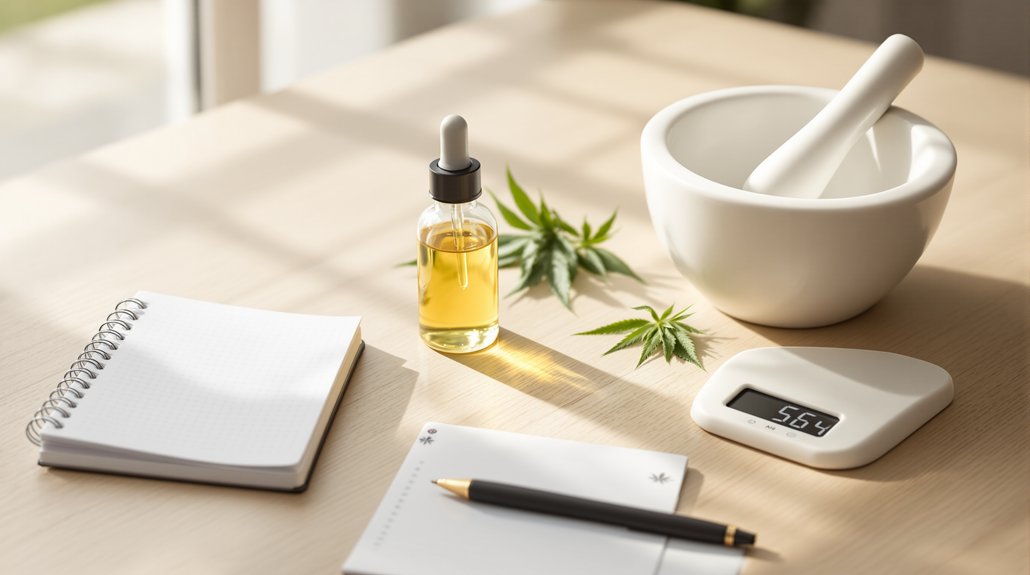Cannabis cuisine has evolved far beyond basement brownies into a sophisticated culinary movement reshaping America’s dining landscape. Michelin-trained chefs now orchestrate multi-course THC-infused tasting menus with laboratory precision, while craft cannabis beverages compete directly with craft beer for shelf space. These elevated experiences command premium prices, some dinners cost $200 per person. The transformation reflects a broader cultural shift as legal markets mature. What’s driving this culinary revolution isn’t just legalization, it’s an unexpected intersection of wellness trends and gastronomic artistry.
The Rise of Culinary Cannabis: From Gummies to Gourmet Experiences
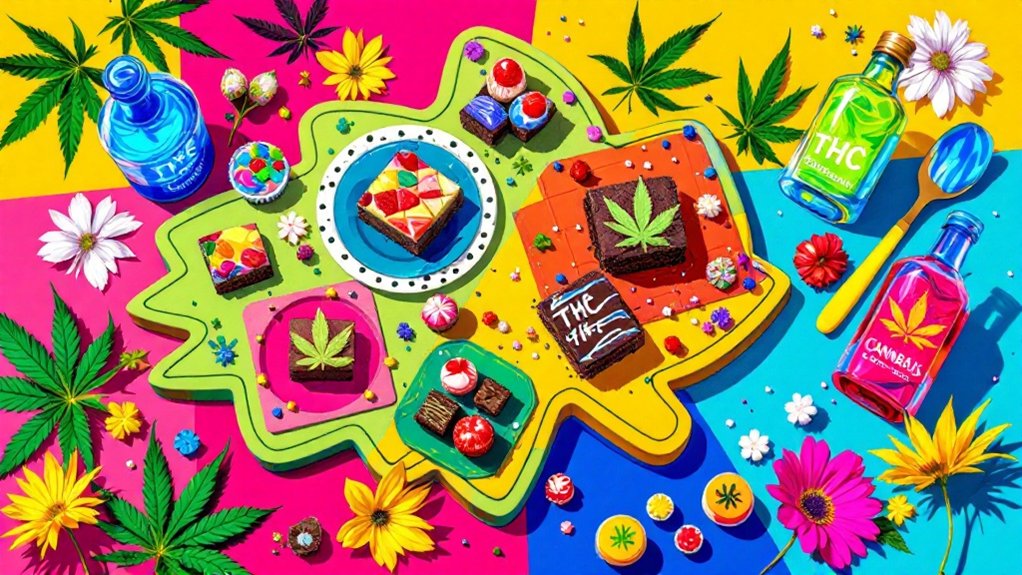
While cannabis edibles once conjured images of amateur brownies baked in college dorms, today’s market has evolved into a sophisticated $14.33 billion industry that rivals traditional gourmet food sectors.
Professional chefs now craft cannabis-infused products with precise dosing and refined flavor profiles, moving far beyond traditional gummies and chocolates.
The culinary revolution encompasses savory snacks, artisanal baked goods, infused cakes, and premium beverages. Microdosed edibles represent the latest innovation in precise cannabis consumption, allowing chefs to create sophisticated culinary experiences with controlled potency.
Cannabis drinks alone generated $54.6 million in Q1 2025, rising 15% year-over-year.
Partnerships between cannabis brands and fine-dining chefs accelerate innovation in gourmet edibles, featuring regional ethnic flavors from Asian fusion to Latin American cuisine. These innovative formulations now include fast-acting edibles that take effect within 15-30 minutes, enhancing the dining experience with more predictable timing.
Luxury packaging and elevated presentation reflect the industry’s premiumization trend.
For optimal preservation of these culinary creations, experts recommend storing edibles at 60-70°F temperatures in airtight glass containers away from sunlight and heat.
This chef-driven approach transforms cannabis consumption into sophisticated culinary experiences that appeal to discerning palates.
Chef-Led Dinners: Fine Dining Meets Precise Dosing
Renowned chefs like Travis Peterson and The Herbal Chef’s Christopher Sayegh now orchestrate exclusive cannabis-infused dining experiences that transform premium restaurants and luxury Airbnbs into temporary theaters of culinary precision.
These multi-course affairs, typically five to ten dishes, feature a single infused component per course, allowing guests to build effects gradually throughout the evening.
Tickets command premium prices up to $500 per person, reflecting the meticulous dosing and high-end presentation standards.
Chefs customize THC and CBD levels based on guest tolerance, with many offering non-psychoactive options for newcomers.
The intimate settings foster unexpected camaraderie among diners, who often bond by the second course.
These pop-ups attract diverse crowds spanning cannabis enthusiasts to curious foodies, elevating infused dining from casual edibles to experiential gastronomy nationwide. Many chefs incorporate cooking demonstrations to educate guests about cannabis preparation techniques while showcasing their culinary artistry. Peterson has developed the first recognized Culinary Cannabis Certification, creating educational pathways for chefs entering this specialized field.
Understanding the THC bioavailability differences between edibles and smoking is crucial for chefs designing these immersive dining experiences.
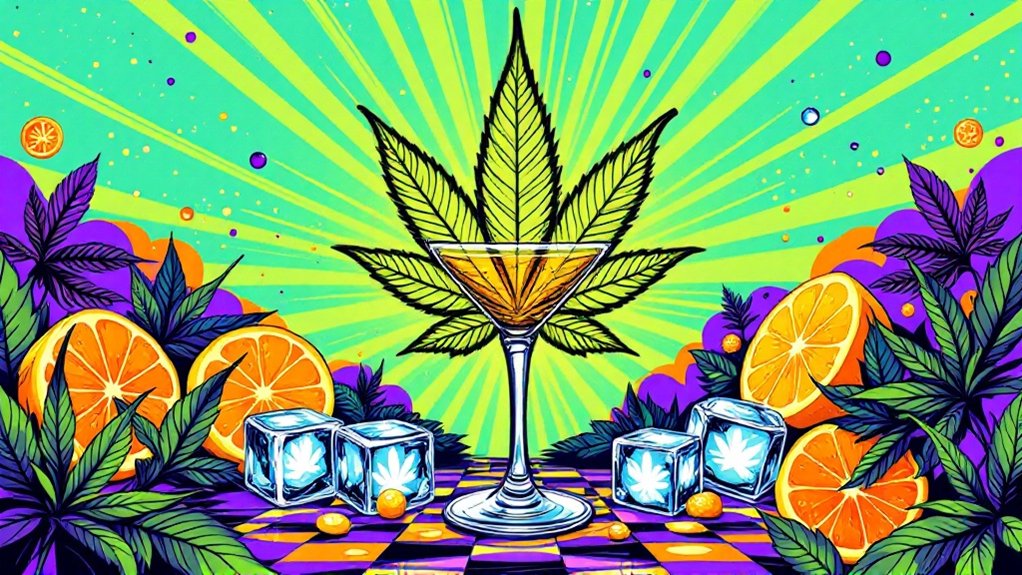
As cannabis legalization sweeps across jurisdictions, THC-infused beverages are positioning themselves as the sophisticated sibling to traditional edibles, and a direct challenger to alcohol’s social dominance.
The market is responding with explosive growth projections of $24.6 billion globally by 2035, driven by a staggering 37.3% compound annual growth rate.
Gen Z and millennial consumers are gravitating toward cannabis seltzers, mocktails, and low-dose shots at social gatherings.
These beverages leverage nanoemulsion technology for faster onset times, enabling session-style consumption that mirrors beer or cocktails. Online channels are revolutionizing access to these products, projected to capture 63.7% of market revenue in 2025 through broader selections and competitive pricing.
Legal-state venues now feature dedicated “bud-tenders” and THC menus targeting sober-curious drinkers.
Market consolidation reflects mainstream acceptance, the top 10 brands now control 64% of sales, up from 52% last year, as established beverage companies enter through strategic partnerships. The non-alcoholic segment dominates the market landscape, commanding an impressive 67.9% share as health-conscious consumers increasingly prioritize wellness-focused alternatives.
Multi-Cannabinoid Innovation: Beyond THC in Edible Products
The cannabis edibles landscape is expanding far beyond single-cannabinoid formulations, with manufacturers now crafting sophisticated blends that harness the power of multiple compounds working in concert.
This approach capitalizes on the entourage effect, where cannabinoids and terpenes work synergistically to enhance therapeutic benefits beyond what THC alone can deliver.
Major players like Wyld, Kiva Confections, and Wana Brands are driving innovation with products featuring balanced ratios of THC, CBDA, and CBGA in vegan gummy formats.
These combinations target specific outcomes—relaxation, energy, or pain relief while potentially reducing anxiety-inducing effects of high-THC products.
The market reflects growing health consciousness, with consumers seeking natural, plant-based alternatives that offer nuanced experiences. However, the delayed onset of edibles, typically taking 30 to 90 minutes to manifest effects, continues to challenge consumer understanding and proper dosing practices.
Product flavor innovation has reached unprecedented levels, with fruit flavors dominating the edible market while confectionery and beverage-inspired options create familiar taste experiences for consumers.
Consuming edibles with fatty foods can extend the duration of effects while slowing their onset, offering users more control over their experience.
Advanced extraction techniques enable precise dosing across multiple cannabinoids, positioning the sector for explosive growth from $14.8 billion in 2025 to $54 billion by 2034.
Regulatory Framework Shaping Cannabis Culinary Arts

While innovative cannabis chefs craft sophisticated multi-cannabinoid experiences, they navigate a regulatory maze that would challenge even the most seasoned legal counsel.
Even master chefs with Michelin-starred backgrounds find themselves drowning in cannabis compliance paperwork that rivals pharmaceutical manufacturing requirements.
Cannabis remains federally classified as Schedule I, creating banking nightmares and tax headaches for culinary entrepreneurs. The proposed PREPARE Act of 2025 hints at federal standardization, but current state-by-state regulations create a patchwork of conflicting rules.
Child-resistant packaging requirements transform elegant chef creations into clinical-looking products. Mandatory testing for pesticides, heavy metals, and microbial contamination adds thousands in compliance costs.
THC dosage limits – typically 10mg per serving, force chefs to rethink portion sizes entirely.
Licensed dispensaries remain the primary sales channel, blocking mainstream grocery distribution. Private dinner events require special permits, while interstate shipping stays federally prohibited.
These restrictions greatly limit market reach for chef-driven cannabis cuisine. Over 72% of consumers now prefer eco-friendly packaging, pushing culinary cannabis businesses to adopt biodegradable materials and sustainable practices despite regulatory constraints. Cannabis companies face additional financial pressure as they cannot pursue bankruptcy relief in federal court due to cannabis remaining federally illegal.
Consumer Demand Driving Wellness-Focused Cannabis Cuisine
Despite regulatory hurdles constraining distribution channels, consumer appetite for wellness-oriented cannabis cuisine continues reshaping the edibles landscape in unprecedented ways.
Millennials and Gen Z command 62.8% of U.S. cannabis sales, prioritizing functional benefits over traditional sugary treats. Women over 21 now represent more than one-third of consumers, seeking holistic health solutions through chef-driven formulations.
The shift toward wellness manifests in demand for precise dosing, clean ingredients, and therapeutic applications. At-home enthusiasts increasingly create their own decarboxylated cannabis infusions to ensure quality control and personalized effects. Aging demographics favor non-smoking formats for chronic condition management, while Gen Z’s 11.3% year-over-year growth fuels innovation in micro-dosing and functional consumption patterns. Market analysts project 18.34% CAGR through 2030 as wellness-focused products drive unprecedented expansion.
THC and CBD beverages capitalize on this trend, offering low-calorie alternatives to alcohol. Online cannabis sales are projected to grow by 300% as consumers increasingly prefer the convenience of digital platforms for purchasing these specialized wellness products.
Culinary innovations incorporate superfoods and adaptogens, creating sophisticated wellness experiences that transcend recreational use entirely.
Looking for more? Check out our series on The New Cannabis Culture
